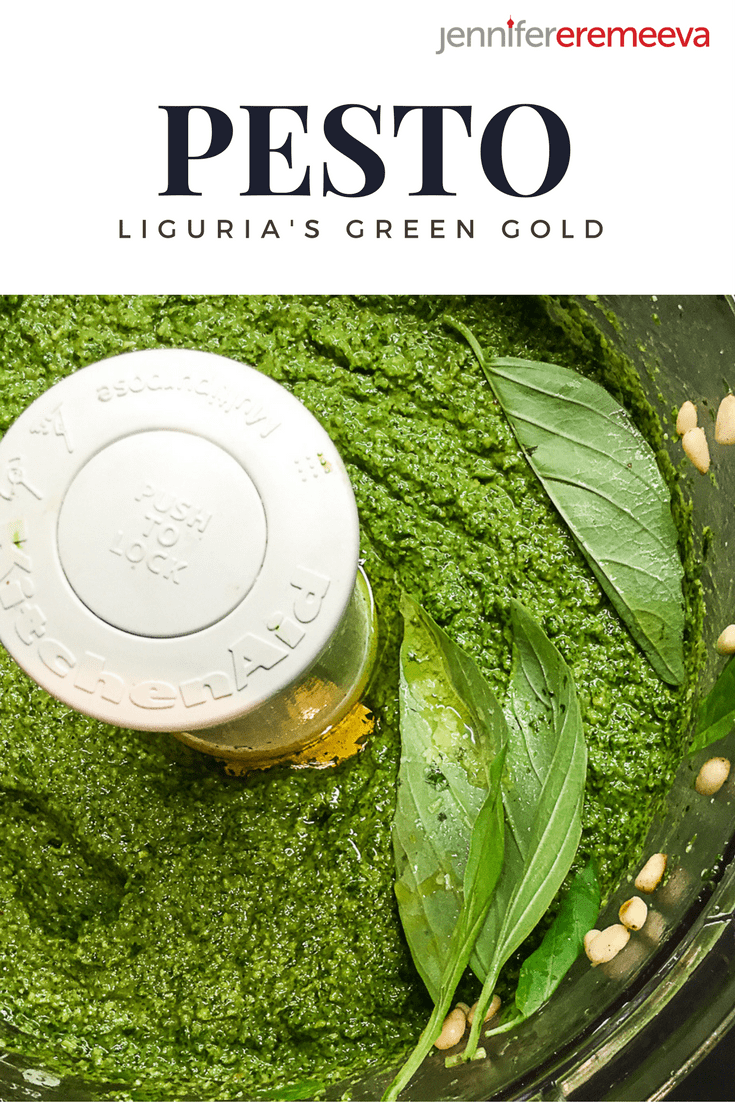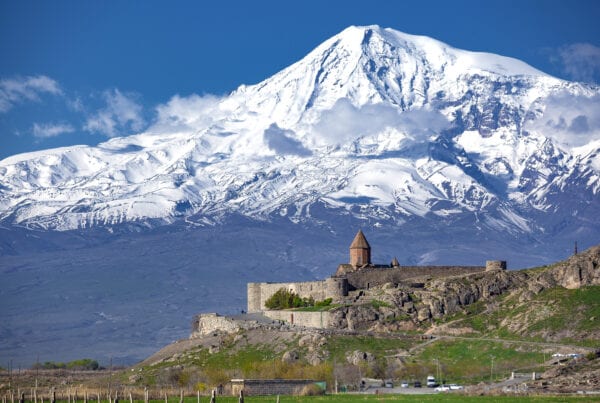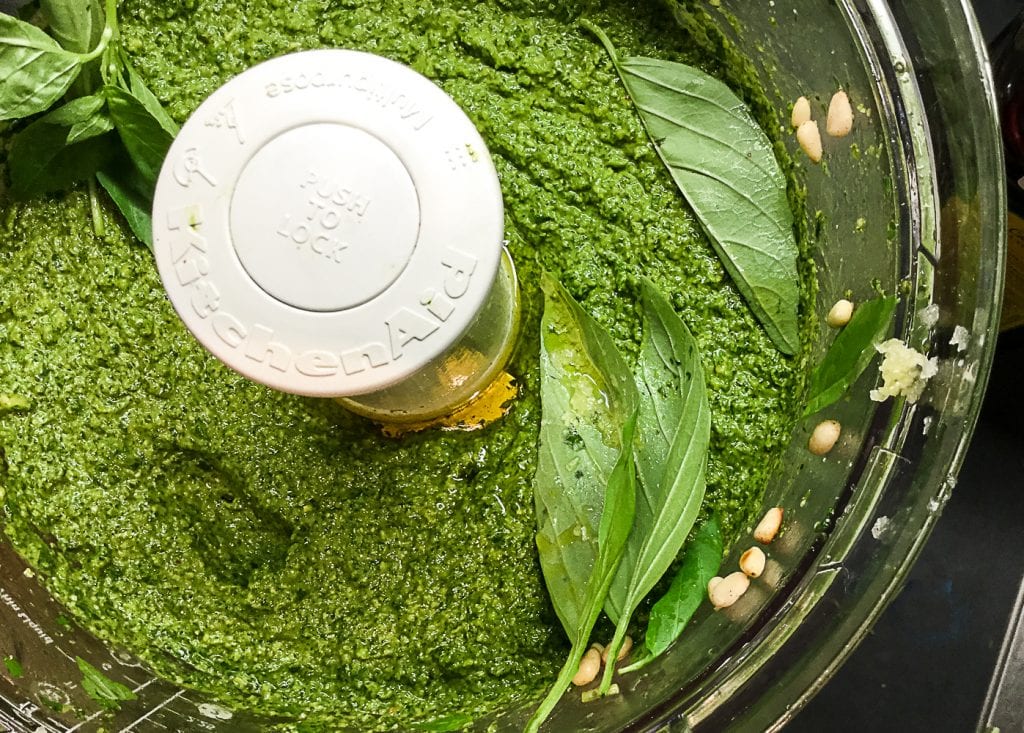Visit Italy!
The Ancient Art
Of Italy’s “Green Gold”
Simplicity is the secret to Liguria’s famous sauce, pesto Genovese, which perfectly fuses the culinary bounty of the sun-kissed Cinque Terre coastline
Welcome, Pesto Genovese Season!
On a recent trip to Northern Italy, a pottery merchant and I passed the time of day as he painstakingly wrapped an exquisite rooster pitcher in layer upon layer of newspaper to safeguard it on my trip home. When I told him I was a food writer, we got to talking about the region’s cuisine.
“You know,” he said, “it’s interesting: our cuisine and the cuisine of Southern France’s use essentially the same ingredients. But where we Italians use a maximum of four or five ingredients in a dish, their recipes begin with at least nine or ten.”
I thought about this the other day, as I pounced on the first fresh basil of the season, welcoming pesto season with open arms. There are only about five ingredients in this beloved Italian sauce, but simplicity is clearly the secret to Liguria’s famous sauce, Pesto Genovese, which perfectly fuses the culinary bounty of the sun-kissed Cinque Terre coastline: extra virgin olive oil, green basil, pine nuts, wild garlic, and tangy sea salt as the base. Sounds simple, but when they come together with a salty aged cheese such as Parmesan or pecorino, the result is magical.
Pesto Goes Back Millenia
“Green gold” as I like to think of it, has been a part of Italian cuisine since ancient times. Virgil has a delightful description of a peasant farmer breakfasting on a garlic and walnut paste in his poem, “Moretum.” In the 15th and 16th century, Genovese sailors used garlic and walnut paste, preserved in salt and olive oil to stave off sickness during the long voyages of discovery, and one can imagine that the scent of fresh wild basil at home required only a short leap of imagination.
Pounding Your Pesto
Making pesto in ancient times was a labor of love, as the ingredients had to be pounded together into a paste using a mortar and pestle, indeed the word “pesto: comes from the verb, “pestare,” which means to pound.
These days, of course, you can use a food processor, as you can see above that I do. That’s my gorgeous KitchenAid food processor, which I treated myself to after I literally destroyed a far less impressive model in what I like to call “The Italian Grandmothers’ Weekend,” in Moscow. For many years, this was a time-honored that happened sometime in July or August, when I would score an entire flat of green basil (very rare at the time in Moscow — the purple stuff that everyone goes into raptures about here is the norm; it was ever thus) and my girlfriends and a few brave men would come over and take turns stripping, washing, and drying the basil, slicing the garlic, and coaxing it all into the poor overworked food processor. This delectable, pungent green condiment was then decanted into baby food jars and stored in the freezer for the long Russian winter ahead. For many years, “Green Pasta” was one of the few things my daughter Velvet would eat, so I’ve made a lot of Pesto Genovese in my time.
Riffing on Pesto Genovese with Other Herbs
Classic Pesto Genovese is made from basil and pine nuts, but there are endless riffs on the original: arugula and walnut, parsley and pistachio, ramps and walnut, purple basil and walnut, and even kale and almond. The method is the same and the good news is that pesto without cheese freezes exceptionally well, so while there is a glut of basil and garlic in your garden, get out your food processor and lay some down for the winter!
Pesto GenoveseIngredients4 cups of fresh basil leaves, removed from their stems, washed and patted dry If serving immediately: 2/3 cup of grated fresh parmesan or pecorino cheese, with extra for topping Instructions:1. Combine the garlic, pine nuts, basil and salt in a food processor, fitted with a steel blade.
Recipe Source: https://jennifereremeeva.com |
This post was originally commissioned for Alexander+Roberts, a leading American Tour Operator, offering trips to Italy and the Cinque Terre to suit every palate.
This post has been updated, edited, and amended for publication on this site.
If you would like to learn more about working with me on posts such as these, please contact me to learn more.
Pin this Recipe

Enjoy more posts like this one:













